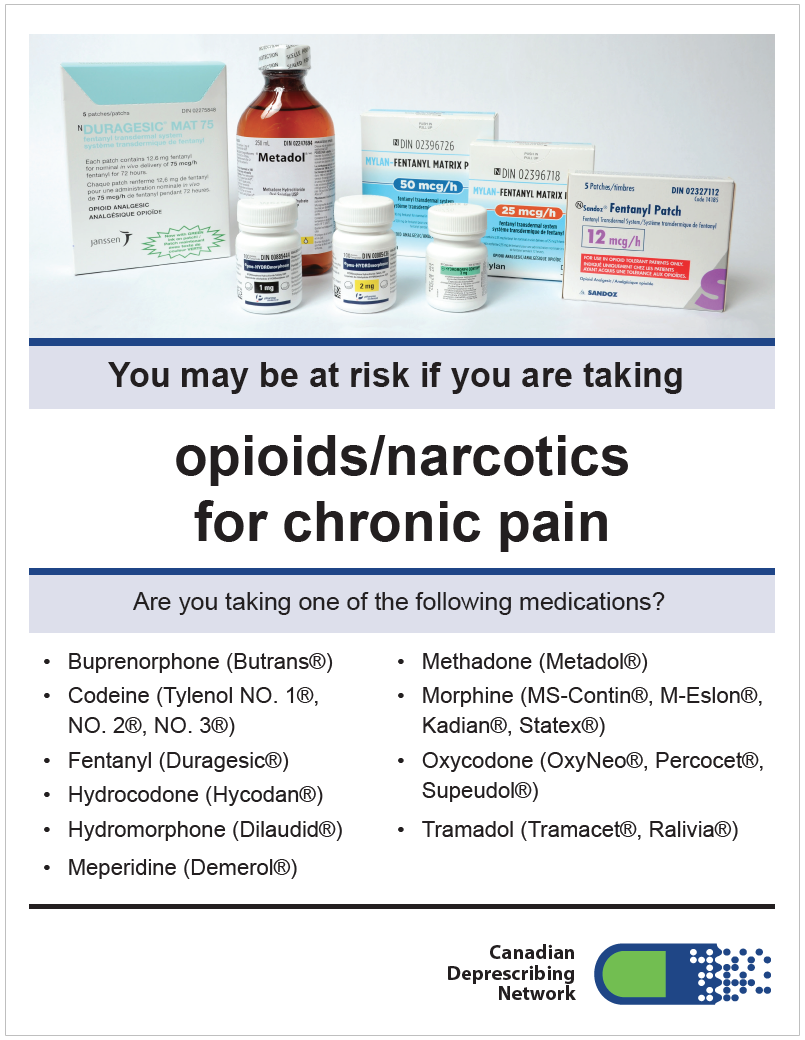
OPIOID TAPERING SCHEDULE
Download this brochure to learn how to reduce your risk of harm from opioid medication and safely manage chronic pain
Schedule for reducing the dose of my opioid medication
Choose the opioid drug you take:
DO NOT REDUCE YOUR DOSE WITHOUT YOUR HEALTH CARE PROVIDER'S SUPERVISION
See your health care provider to develop a personalized plan that’s right for you.
How will my health care provider reduce my opioids?
Everyone is on a different dose of opioids. Gradually reducing your dose of opioids requires an individualized plan. You health care provider will reduce the dose by 10%-20% every 1-4 weeks, with the last third of the program taking longest.
If I gradually decrease the dose of my opioid, will my pain get worse?
No. In fact, pain, function and quality of life often improve when opioids are stopped. This is because over time, opioids can become less effective, with increasing doses only increasing side-effects. When you need an opioid medication, take the lowest dose for as short a time as possible, and then gradually reduce your dose until you stop. Once side-effects of opioids lessen, people often find they feel better.
CAUTION
Your tolerance to opioids will reduce as you cut down your dose. This means YOU ARE AT RISK OF OVERDOSING IF YOU QUICKLY GO BACK TO HIGH DOSES OF OPIOIDS. Always take opioids as prescribed.
WITHDRAWAL SIDE EFFECTS
When reducing the dose of an opioid too quickly, some people may experience withdrawal reactions (e.g. insomnia, anxiety, nausea). Various strategies and treatments are available to manage withdrawal side effects. Talk to your health care provider to prevent severe withdrawal symptoms.
WARNING
DO NOT CUT SLOW-RELEASE TABLETS IN HALF. Cutting pills in half destroys the slow-release coating on the pill. You may receive a higher dose and risk overdosing.
Looking for more information on opioids?
If you would like additional detailed information about opioid deprescribing, click here to see the Opioid Tapering Template produced by RxFiles Academic Detailing.
Opioids for pain after surgery: your questions answered
If you've been prescribed an opioid medication for pain after surgery, here are the things to know and look out for to minimize pain, harmful effects and risk of addiction.
Check out these other great Canadian resources to guide opioid tapering and deprescribing
The Ontario Centre for Effective Practice has created an Opioid Tapering Template and an Opioid Use Disorder (OUD) Tool for health care providers.
Saskatchewan based RxFiles has created a comprehensive toolkit to guide opioid tapering in patients with chronic pain available here.






